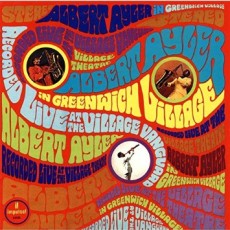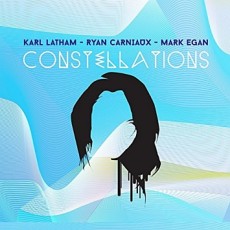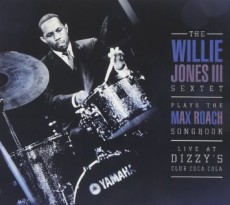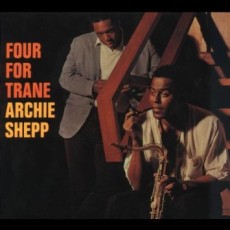
Daily Dose Of Jazz…
Albert Ayler was born on July 13, 1936 in Cleveland Heights, Ohio and was first taught alto saxophone by his father Edward, who was a semiprofessional saxophonist and violinist. They played alto saxophone duets in church and often listened to jazz records together, including swing era jazz and then-new bop albums. He attended John Adams High School adding oboe to his instruments, followed after graduation with studies at the Academy of Music with jazz saxophonist Benny Miller. It was during his teenage years that he picked up the nickname “Little Bird” because of his understanding of bebop style and mastery of standard repertoire.
In 1952, at the age of 16, Ayler began playing bar-walking, honking, R&B style tenor with blues singer and harmonica player Little Walter, spending two summer vacations with the band. By 1958 he was in the Army, switched from alto to tenor sax, playing in the regiment band and jamming with other enlisted musicians, including tenor Stanley Turrentine. Stationed in France a year later, he was further exposed to the martial music that would be a core influence on his later work. After his discharge from the army, Ayler tried to find work in Los Angeles and Cleveland, but his increasingly iconoclastic playing, which had moved away from traditional harmony, was not welcomed by traditionalists.
In 1962 Albert relocated to Sweden, where his recording career began, leading Swedish and Danish groups on radio sessions, and jamming as an unpaid member of Cecil Taylor’s band. It was here in Copenhagen that he recorded My Name Is Albert Ayler with Niels-Henning Orsted Pedersen and Ronnie Gardiner. 1963 saw his return to settle in New York City, develop his personal style, record his debut as a leader titled Witches and Devils and begin a relationship with ESP-Disk Records in 1964, recording his breakthrough album Spiritual Unity with Gary Peacock and Sunny Murray, which was also the label’s first jazz album. His trio would go on to record with Don Cherry, John Tchicai and Roswell Rudd on the soundtrack to New York Eye and Ear Control, which was followed by a tour with his trio plus Cherry producing the albums The Copenhagen Tapes, Vibrations, and The Hilversum Session.
In 1966 Ayler signed with Impulse Records at the urging of Coltrane but his radically different music never found a sizable audience. However his first set titled Albert Ayler in Greenwich Village with his brother Donald, Michael Samson, Beaver Harris, Henry Grimes and Bill Folwell too Ayler back to the alto on his tribute tune “For John Coltrane”. He first sang on a recording in a version of “Ghosts” performed in Paris in 1966. He would go on to record three albums of lyrics and vocals of his girlfriend Mary Maria Parks and introduce regular chord changes, funky beats and electronic instruments.
Avant-garde jazz saxophonist, singer and composer Albert Ayler disappeared on November 5, 1970, and he was found dead in New York City’s East River on November 25,1970, a presumed suicide. In tribute, Swedish filmmaker Kasper Collin was so inspired by hiss music and life that he produced a documentary by the name of My Name is Albert Ayler, which includes interviews with ESP-Disk founder Bernard Stollman, along with interviews with his family and band mates.
More Posts: saxophone

Daily Dose Of Jazz…
Karl Latham, born on June 9, 1961 is currently based in New York. He received a B.S.S. from Ohio University and studied music performance at Rutgers University, Ohio University and Berklee College of Music, including private studies with drumming greats Gary Chester and Joe Morello.
Latham is known for his exceptional ability to dig into a variety of musical styles, playing straight-ahead jazz, avant-garde, funk, rock, Latin, and more. As a freelance performer he has performed with wide spectrum of notable artists such as Bernie Worrell, Dave Valentine, Dave Samuels, Chuck Loeb, Ali Ryerson, Claudio Roditi, Clark Terry, John Lee, Andy Snitzer, The Dizzy Gillespie Alumni All-Stars, Slide Hampton; Edgar Winter, Johnny Winter, Yotam Silberstein, Charlie Elgart, Michal Urbaniak, The Real Deal Big Band and for the Broadway hit musical “Bring it On” just to name a few of his drumming exploits.
Karl is widely recognized as a veteran of the modern European Jazz scene since 1993, has released 7 CDs with Atilla Zoller, Randy Brecker, Cameron Barnes, Seamus Blake, Joel Frahm, Joe Lovano and others. He is a member of the electric jazz jam group, Unit1, with Mark Egan and John Hart, was ranked 7th drums, in the 2013 35th Annual Jazz Station Poll. He is also a member of “Constellations” with Ryan Carniaux and Mark Egan and is co-leader of Big Fun(K) with saxophonist/composer Don Braden and has released two CD’s as a leader. In addition to performing, recording and touring he is a long-standing adjunct professor at several New Jersey colleges and teaches workshops, master classes and clinics in the USA and abroad.
More Posts: drums

Daily Dose Of jazz…
Willie Jones III was born on June 8, 1968 in Los Angeles, California. His initial exposure to music came from his father Willie Jones II, an accomplished jazz pianist. With his guidance and inspiration the young drummer began studying with acclaimed drummers and music instructors. By the time he was in his teens her was performing with numerous distinguished musicians. He completed his training at California Institute of the Arts under the tutelage of Albert “Tootie” Heath.
As a co-founder of the group Black Note, he took the West Coast bop movement and gave it a hard swing, propelling them into first place in the John Coltrane young Artist Competition in 1991. He would go on to become a semifinalist the following year at the Thelonious Monk Jazz Drum Competition, and eventually the group released four albums. He has played, toured, and/or recorded with Milt Jackson, Horace Silver, Arturo Sandoval, Roy Hargrove, Peter Zak, Hank Jones, Cedar Walton, Herbie Hancock, Eric Reed, Kurt Elling and Wynton Marsalis Jazz at Lincoln Center.
Jazz musicians appreciate his exceptional speed and control together with his use of a wide range of textures that characterize most of his playing. He is a master of many styles and moves quickly and easily between bebop, big band, avant-garde, Latin jazz grooves, hard bop and swing.
He has released several albums under his own name as a leader and on his indie label, WJ3 Records. His music has been sampled, however, he has filed a lawsuit in 2014 against California rapper Kendrick Lamar for allegedly sampling “The Thorn” illegally in Lamar’s song Rigamortis. Drummer Willie Jones III continues to perform, record and tour both as a leader and sideman.
More Posts: drums

Daily Dose Of Jazz…
Archie Shepp was born on May 24, 1937 in Fort Lauderdale, Florida but was raised in Philadelphia, Pennsylvania. He studied piano, clarinet and alto saxophone before focusing on the tenor saxophone. He studied drama at Goddard College from 1955-59, eventually turning professional.
Shepp played in a Latin jazz band for a short time before joining the band of avant-garde pianist Cecil Taylor. His debut recording as a leader was under his own name, Archie Shepp-Bill Dixon Quartet on the Savoy label. The 1962 session included an Ornette Coleman composition was the initial link to the formation of the New York Contemporary Five, which included Don Cherry. Two years later with the admiration of Coltrane he recorded Four For Trane on Impulse Records with trombonist Roswell Rudd, bassist Reggie Workman and alto John Tchicai.
Archie participated in the sessions for Coltrane’s A Love Supreme in late 1964, but none of the takes were included on the final release but has since been made available on a 2002 reissue. He would cut Ascension with Coltrane in 1965, and his place alongside Coltrane at the forefront of the avant-garde jazz scene was epitomized when the pair split the record New Thing At Newport, the first side a Coltrane set, the second a Shepp set.
During the decade he would develop his political consciousness and Afrocentric orientation, recording albums that reflected. His albums Fire Music and The Magic of Ju-Ju put him at the forefront of the free-form avant-garde movement along with Pharoah Sanders. He continued to experiment into the new decade, at various times with harmonica players and even spoken word poets. Never far from political and social commentary Archie released Attica Blues for the prison riots and The Cry Of My People that spoke to civil rights. He also wrote for theater including The Communist and Lady Day: A Musical Tragedy.
In 1971, Shepp was recruited to the University of Massachusetts Amherst that began a thirty-year career as a professor teaching Revolutionary Concepts in African-American Music and Black Musician in the Theater, also teaching African-American Studies at SUNY in Buffalo, New York.
In the late 1970s and beyond Archie would record blues, ballads, spirituals, tributes to traditional jazz musicians, as well as R&B. He would perform with Sun Ra’s Arkestra, French trumpeter Eric Le Lann, with Michel Herr creating the original score for the film Just Friends. He also appeared on the Red, Hot Organization’s tribute to Fela Kuti titled Red, Hot and Riot.
He has been featured in two documentary films, 1981’s Imagine The Sound, in which he discusses and performs his music and poetry, and Mystery Mr. Ra in which he discusses and performs his music and poetry. Shepp also appears in Mystery, Mr. Ra, a 1984 French documentary about Sun Ra.
In 2004 he founded his own record label, Archieball, together with Monette Berthomier in Paris. Tenor and soprano saxophonist, pianist, vocalist Archie Shepp continues to perform, collaborate and record.

Daily Dose Of Jazz…
Wu Fei was born on May 12, 1977 in Beijing, China. From the age of four she began her music studies first on the guzheng and then piano the following year, practicing two to four hours everyday. At fourteen she tested into the China Conservatory of Music and studied composition before and then at Mills College in the United States.
Wu Fei, who is also a composer, vocalist and improviser, combine East with West in her approach to her music. In 2007 she released her debut solo album A Distant Youth with accompanying guitar, violin and percussion. Her sophomore project titled Yuan followed the following year.
She has recorded with Abigail Washburn Carla Kihlstedt, Helge Andres Norbakkeh and two Fred Firth albums, as well as on his soundtrack for the PBS documentary film The Happy End Problem. Her performance was highlighted in the 2009 Shan Qi music DVD and she gave a live performance on guzheng and voice at the Hermes fashion show during Paris Fashion Week. Wu Fei, avant-garde and experimental jazz musician, continues to perform, compose and record.


